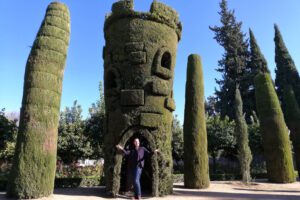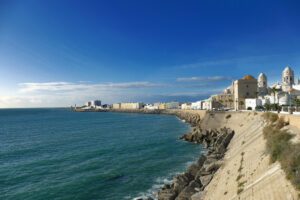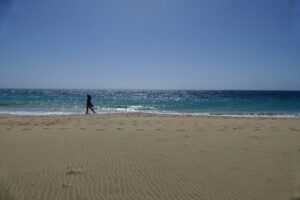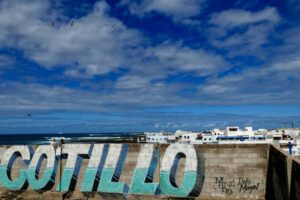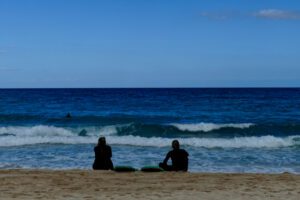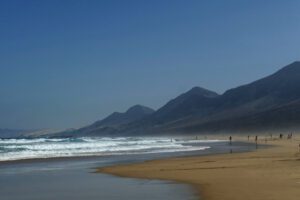Recently, I was lucky enough to spend an entire week in Barcelona, however, since it’s Spain’s second-largest airport, chances are that you’ll have to stay there just for up to 24 hours on a layover.
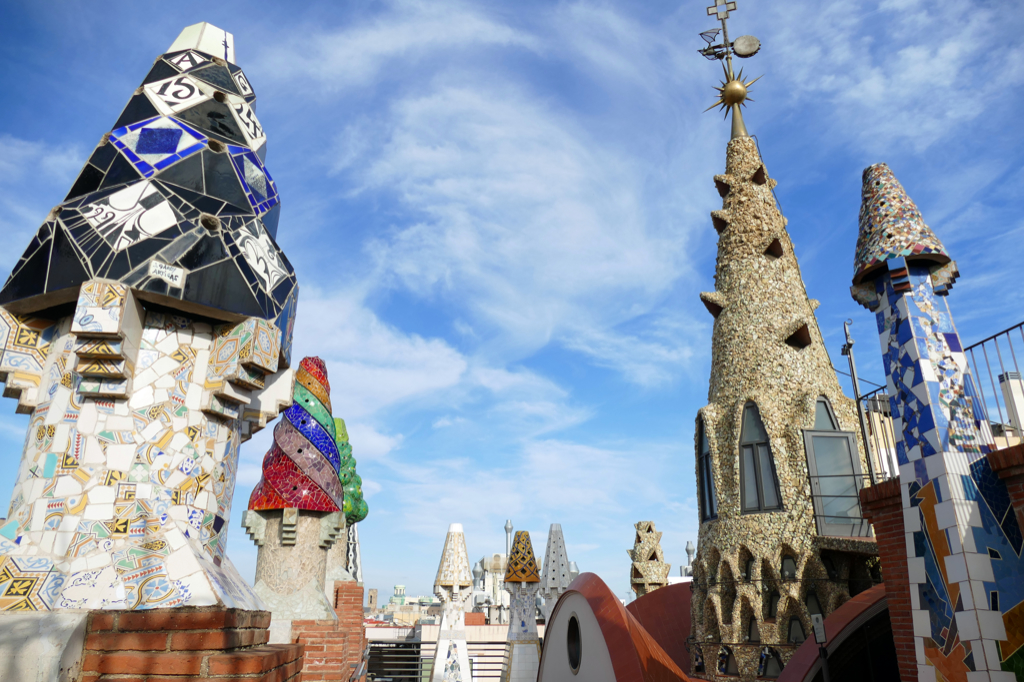
Although this is far too short for one of Europe’s most fascinating metropoles, in this guide, I show you how to make the best of it.
Barcelona is Spain’s second-largest city and the capital of the autonomous community of Catalonia. It is located on the Mediterranean Sea only about 120 kilometers south of the Pyrenees and the French border.
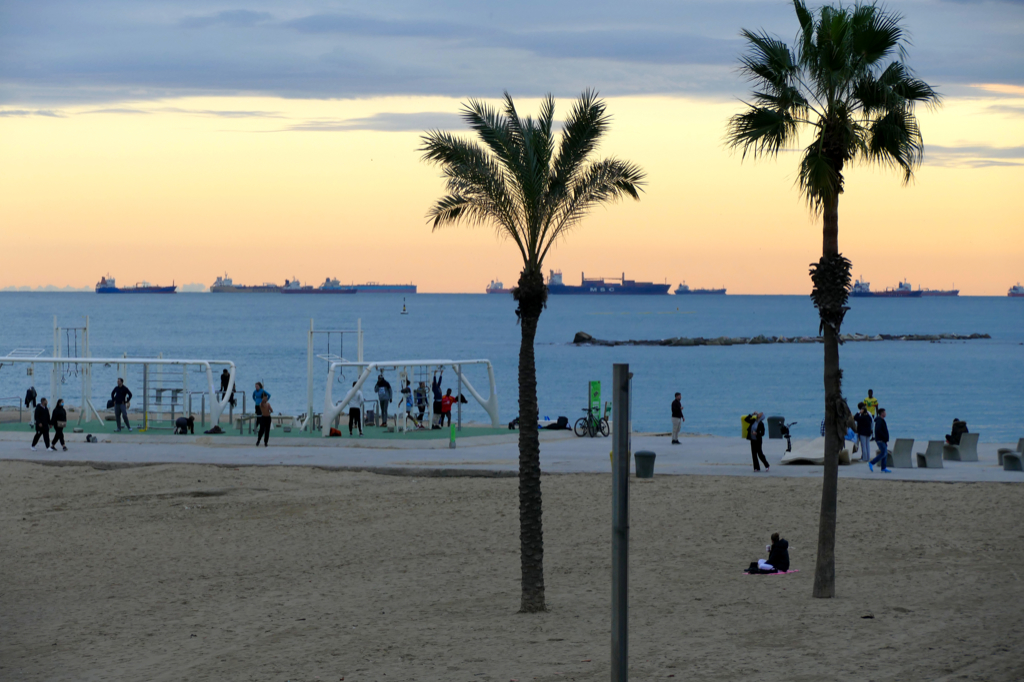
Even on a short visit, you’ll be enchanted by grand boulevards lined with modernist architecture, amazing views of the harbor and beaches along the Mediterranean Sea, and a rousing vibe. Hence, I’m sure Barcelona will take you by storm so you’ll soon be back for a longer stay.
Don’t worry, I’ve got you covered for an extended visit, too: Just check out my post on Seven Days in Barcelona.
 Local Currency
Local Currency
Local Currency: Euro (EUR) / 1 EUR = 1.16 US$ as of July 2025 / current rate
 Emergency Contacts
Emergency Contacts
All emergency contacts including police and fire department 112
 National Airline
National Airline
 Airport
Airport
Aeropuerto Josep Tarradellas Barcelona-El Prat / IATA-Code: BCN
 Tourist Info Online and Onsite
Tourist Info Online and Onsite
Turisme de Barcelona
Airport Terminal 1: open daily from 8.30 a.m. to 8.30 p.m.
Airport Terminal 2: open Monday to Friday from 8.30 a.m. to 8.30 p.m. and Saturdays from 8.30 a.m. to 8 p.m. and Sundays from 9 a.m. to 3 p.m.
Tourist Information Point
Plaça de Catalunya, 17-S
Phone +34 – 932 853 834
Open daily from 8.30 a.m. to 8.30 p.m.
 Getting Downtown and Back and Around
Getting Downtown and Back and Around
The Aeropuerto Internacional el Prat de Barcelona is one of Spain’s major air traffic hubs. There are tons of domestic as well as international connections including some of Europe’s low-cost airlines. Since the airport is only about 12 kilometers southwest of the city, you’ll get to the city center pretty fast even by relatively cheap public transport.
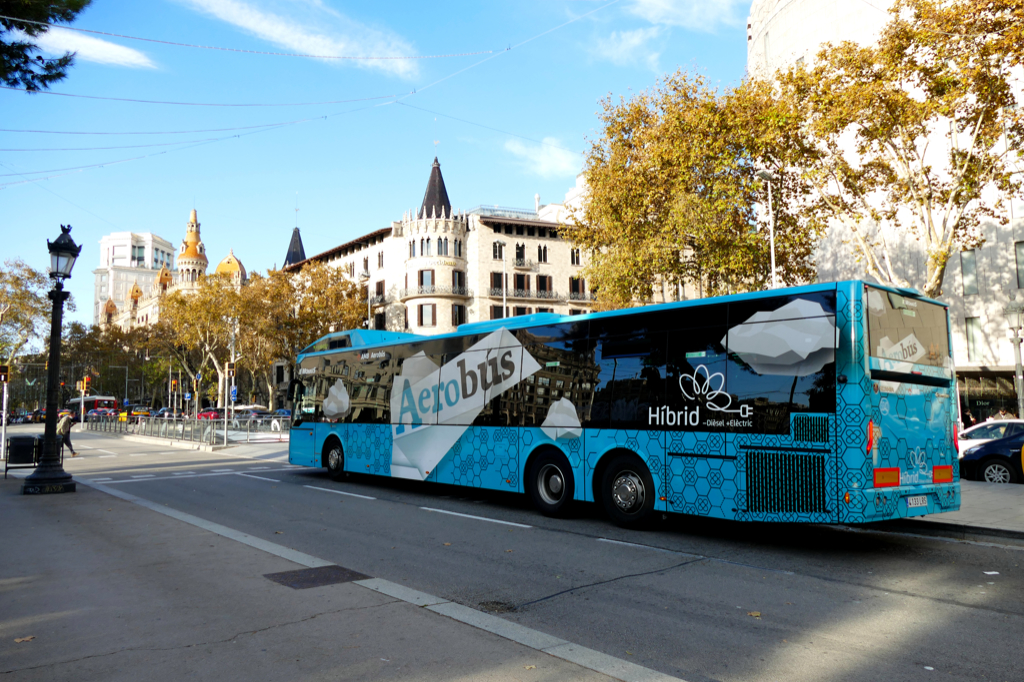
From around 5.30 a.m. till midnight, an airport bus connects terminals T1 and T2 with the city center’s main squares Plaça d’Espanya and Plaça de Catalunya. You can obtain tickets from the vending machines and often from staff by paying cash or with your credit card.
A single ride with the Aerobús costs 5.90 €uros, and a round trip 10.20 €uros. The airport is also connected to the center by a regional train. Although going by train is as fast and comfortable as by Aerobús, there are far fewer connections. Yet, it’s cheaper.
Barcelona has a comprehensive and well-functioning system of public transportation consisting of buses, metro lines, and local trains. A single ride costs 2.40 €uros. You can save a lot of money by getting a T-casual card. It costs 11.35 €uros and is good for ten rides.
 Morning Activities
Morning Activities
The Plaça Catalunya is the perfect starting point to explore Barcelona’s center. It’s just minutes away from the Gothic Catedral de la Santa Creu i Santa Eulàlia and the famous Barrio Gotic, hence, the Gothic Quarter which is the oldest district of Barcelona, obviously.
For this tour, access the famous avenue La Rambla at the square’s southwestern corner.
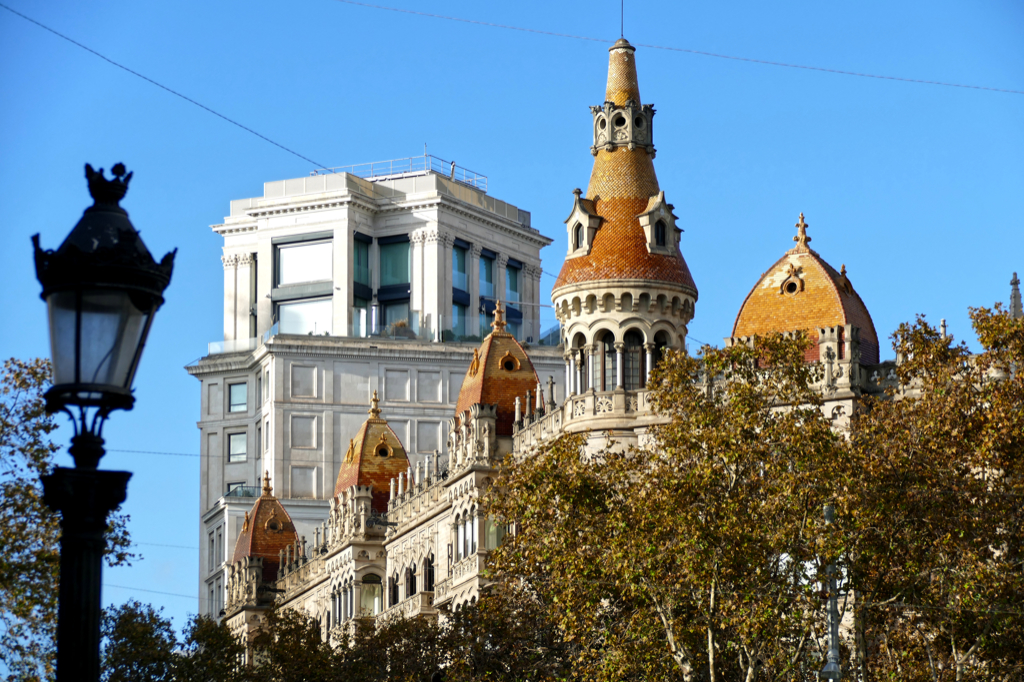
La Rambla connects Plaça de Catalunya with the old port on a 1.2-kilometer-long boulevard. It is divided into five sections: Rambla de Canaletes, Rambla dels Estudis, Rambla de Sant Josep, Rambla dels Caputxins, and Rambla de Santa Monica. Each of these stretches has something special to offer, so keep your eyes open while walking down the central footpath. Apart from enjoying a truly Mediterranean atmosphere, you’ll find some of Barcelona’s magnificent historic buildings here.
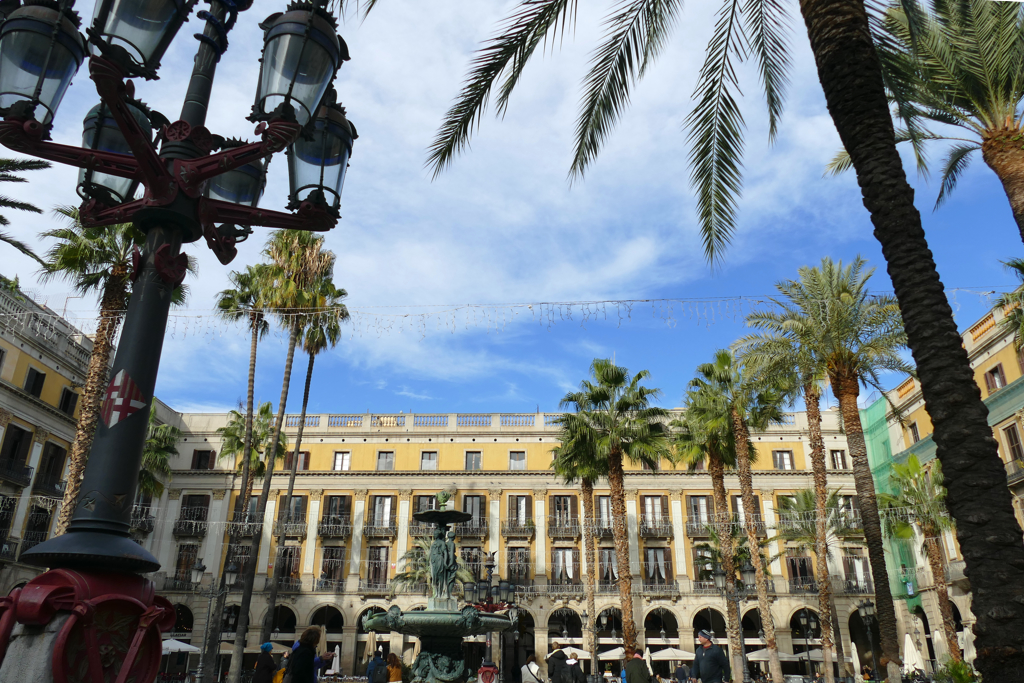
Also, east of the Rambla dels Caputxins is the grand Plaça Reial. Francesc Daniel Molina i Casamajó designed it in a neoclassical style and it was completed in 1859. Buildings and arcades in the classicist style surround the serene court. In 1878, Gaudí designed unique street lamps to decorate and illuminate the Plaça Reial.
On the Waterfront
At the Rambla’s southernmost tip is the Plaça Portal de la Pau. In the center stands the 68-meter-high Column of Columbus. It was built on the occasion of the World Exhibition in 1888. After its inauguration, it immediately became one of the most characteristic monument of the city. On top is a small platform from where you have a great panoramic view of the port and the Mediterranean Sea. Don’t you worry, you can get up by elevator. The viewing platform is open every day from 8.30 a.m. to 2.30 p.m.
I’ve been to so many cities where the big deal ought to be that they have a beach. Yet, very often, this beach is just some sandy dump on the shores where you don’t wanna walk barefoot out of fear of cutting your feet on the broken beer bottles left from the night before. This is definitely not the case in Barcelona where the beaches are wide and clean and very enjoyable. The city beach La Barceloneta is located just a short walk east of the Plaça Portal de la Pau.
Especially during the summer months, spending at least a couple of hours relaxing on the beach can be a fantastically rejuvenating experience in between all the sightseeing.
As the Platja de la Barceloneta is easily accessible either by walking or by public transport, it is also the perfect spot for a sundowner after a long day spent chasing art’n’culture.
Parc de la Ciutadella
For many years, the Parc de la Ciutadella was the only public park in Barcelona. Its architect Josep Fontserè i Mestre adopted the design of Jardin du Luxembourg in Paris. Inaugurated in 1881, it hosted the World Exhibition in 1888.
The park’s most prominent feature is a monumental waterfall. Although Josep Fontserè designed the construction, the hydraulic part was incumbent upon Antoni Gaudí.
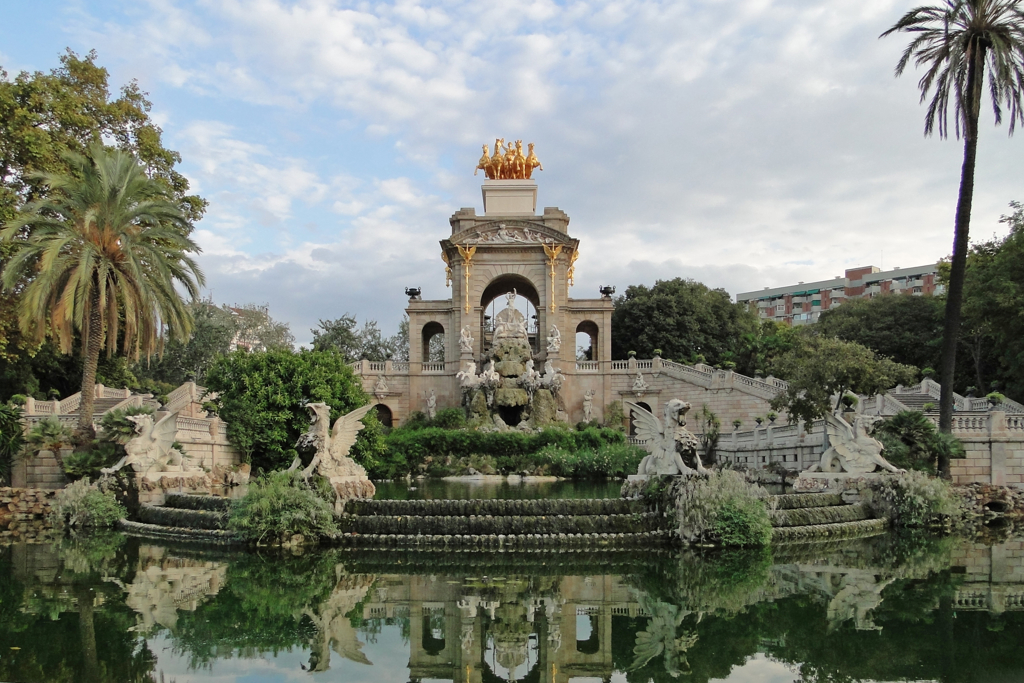
On the site is not only the Catalonian Parliament but also the Museum of Natural Sciences as well as the city’s zoo. However, a visit to the greenery is also a joy for all you culture vultures since you’ll stumble upon a fantastic number of sculptures while strolling through the park.
Of the park’s ten entrances, the two monumental gates on the Paseo de Pujades and the Paseo de Picasso stand out. Arguably, they were created by Josep Fontserè’s assistant, the then still young Antoni Gaudí.
The Parc de la Ciutadella is open daily from 10 a.m. to 10.30 p.m.
From the park’s northern border, it’s only a short 10-minute walk to the restaurant where you’ll enjoy lunch.
 Morning Activities
Morning Activities
The significance of Antoni Gaudi for Barcelona is already reflected in the fact that of nine UNESCO World Heritage Sites around the city, he designed seven. So what better way of hiding from the Catalonian rain than visiting two of his most celebrated constructions? Both are within walking distance from the Hotel HCC St. Moritz* as well as from each other.
Casa Batlló
Casa Batlló is a residential and commercial building on Passeig de Gracia 43. Named after its commissioner, it is considered one of the city’s architectural highlights.
The textile manufacturer Josep Batlló i Casanovas commissioned the remodeling of his mansion in the modernist style from 1904 to 1906. To create this mesmerizing work, Gaudí cooperated with other talented architects and sculptors.
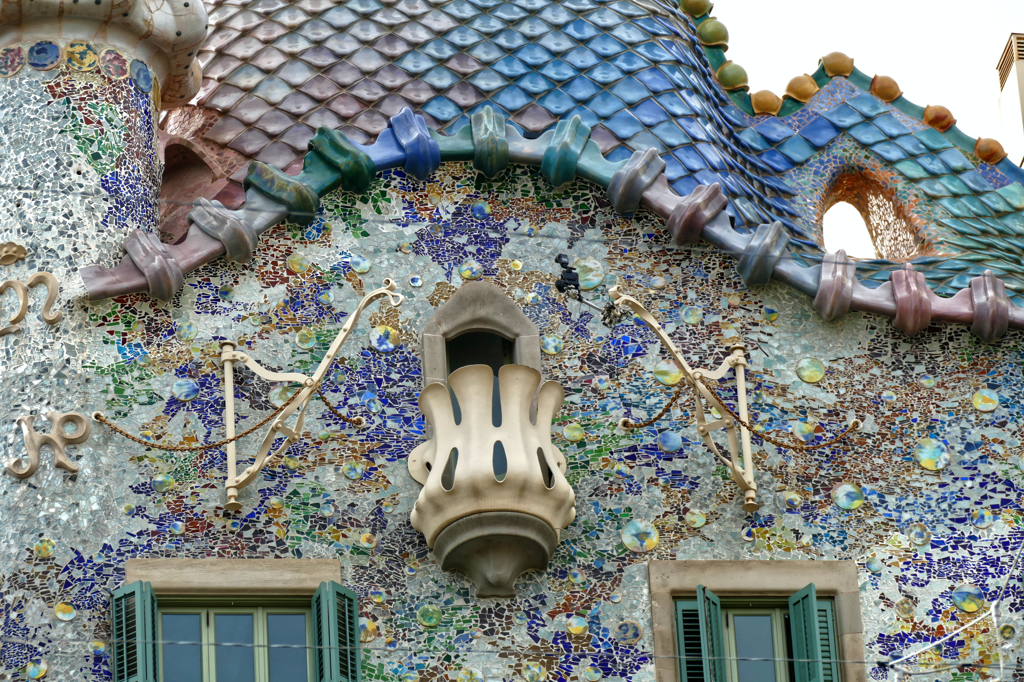
The colorful façade tells the legend of Saint George, the patron saint of Catalonia. Here they call him Sant Jordi.
The roof represents the dragon that Saint George fights. The cross on the roof stands for his lance. The wrought-iron balconies portray skulls, and the gallery on the first floor represents the dragon’s mouth.
The Bernat family, the founders of Chupa Chups, currently own Casa Batlló. Part of the building including the foyer, the bel étage, the stairwell, the attic, the roof, and the backyard are open to touristy visits.
Casa Batlló is one of Barcelona’s main tourist attractions, therefore, you should definitely consider a visit despite the incredibly expensive entrance fee of 39 €uros. Also, making an online reservation is highly recommended. Casa Batlló is open every day from 9 a.m. to 8 p.m.
Casa Milà
Antoni Gaudí designed this architectural marvel for the Milà family between 1906 and 1912. The building is a concrete and iron construction. Three inner courtyards provide the rooms with sufficient light and fresh air. Natural lighting was rather unusual at that time. All stately rooms face the street or the largest courtyard. The servants’ and utility rooms face the two inner courtyards.
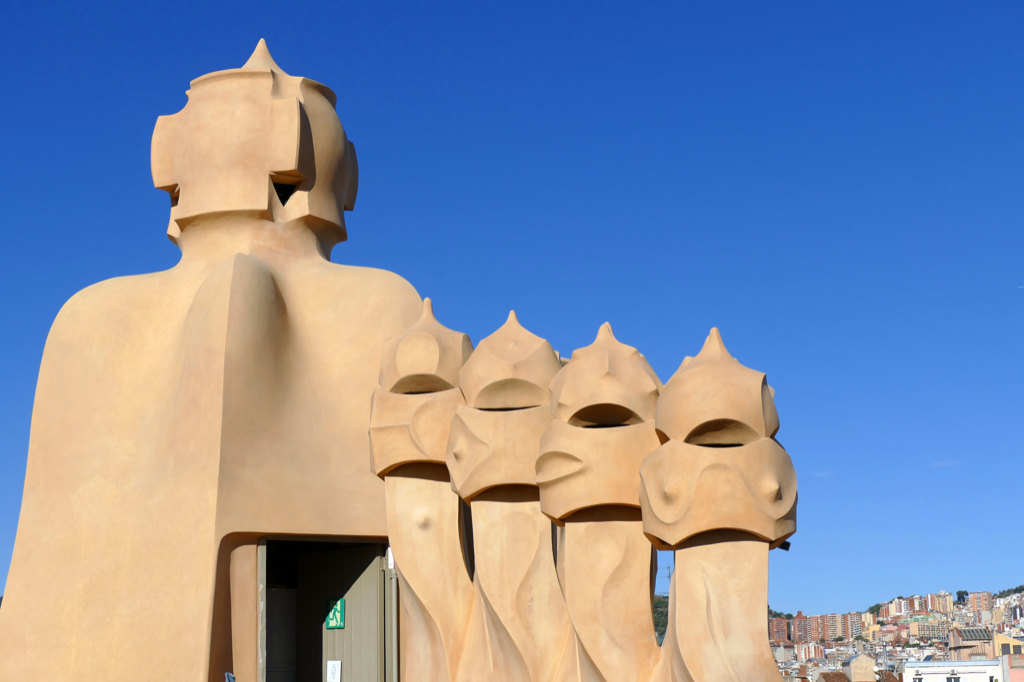
A well-thought-out system grants perfect natural ventilation. The walls in each apartment can be adjusted individually. After all, instead of the walls, columns are bearing the load.
I think that everyone will agree that the so-called Pedrera’s strongest suit is the roof. Up there, functionality meets beauty. The visitor walks through a bizarre landscape of stairwells, ventilation towers, and chimneys. Some of the chimneys are freestanding while others are grouped in batches of three or four.
You can visit Casa Milà every day from 9 a.m. to 6.30 p.m. and from 7 p.m. to 10 p.m. for the night tours. General admission is 25 €uros for the standard visit. The night tours start at 35 €uros. You’ll find many more visiting options on their website.
If you want to spare more time for Gaudí’s marvels, there are combi tickets that include also other buildings such as the Casa Batlló, the Palau Güell, and of course the Sagrada Família. Also, you get small discounts with most tourist passes such as the Ruta del Modernisme.
 Lunch
Lunch
Eat better, be happier, live longer – who in their right mind would not subscribe to Flax And Kale’s slogan?

This motto is reflected in all of their products – from healthy drinks to detoxifying meals. You can buy those individually or in combos. All products are designed according to their nutritional value. An overwhelming 80 percent is actually plant-based. The remaining foods contain fish.
Obviously, you can enjoy Flax And Kales’s healthy, sustainably produced yet delicious food also on the spot. They serve light dishes, influenced by international cuisines from Asia and Latin America. Enjoy their healthy juices, creative salads, and vegan desserts in a stylish setting.
The Flax and Kale stores can be found in two locations in Barcelona. For this tour, I recommend lunch at their venue at the Pasaje de las Manufacturas which opens at noon.
 Afternoon Activities
Afternoon Activities
Even if the weather is far too good to spend the afternoon indoors, you should at least admire the Sagrada Familia from the outside. After all, it’s Barcelona’s most iconic construction site.
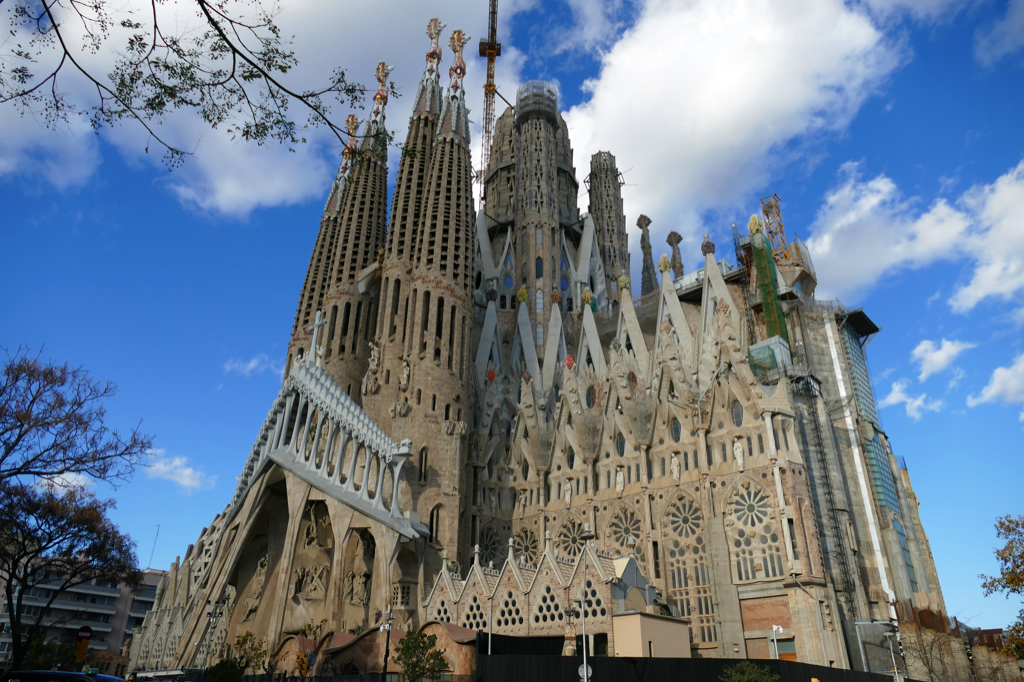
The construction of the Roman Catholic Basilica began in 1882 and remains unfinished. However, completion is expected in 2026, on the occasion of the 100th anniversary of Gaudí’s death. Presuming this actually works out, the construction would have taken a total of 144 years!
The foundation stone was laid in 1882. Nevertheless, soon it became apparent that the time plan could not be fulfilled due to Gaudí’s extended designs. In total, he worked on the church for 43 years, the last 15 years on exclusively this project. Asked about his bad timing, Gaudí replied “My client is in no hurry”. It’s not really clear if he referred to the authorities or to God.
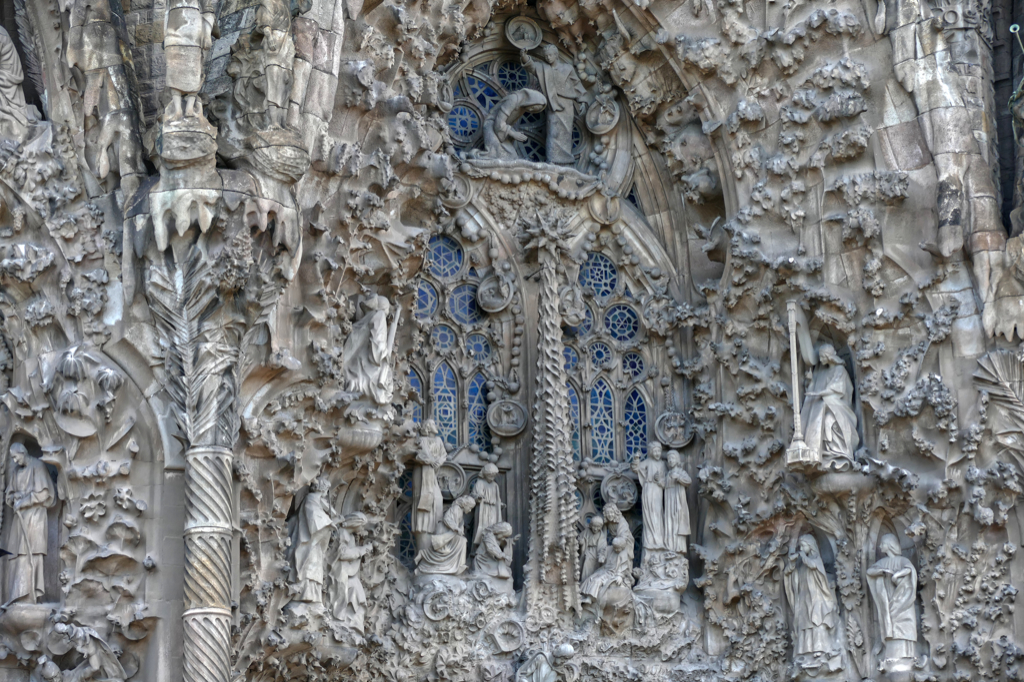
In 2005, the world’s fanciest construction site made it onto the list of UNESCO World Heritage Sites. Pope Benedict XVI. consecrated the church and granted it the status of a papal minor basilica in 2010.
Funnily, only in 2016, it became clear that no building permit has ever been issued. However, it was then quickly granted in 2019.
If you want to visit the Sagrada Família, you can do so from Monday to Saturday from 9 a.m. and Sundays from 10.30 a.m. The general admission starts at 26 €uros for a self-guided visit and 30 €uros for a guided tour. Like most of Gaudí’s works, it is not included in any tourist pass but there are combi tickets that include for instance the Parque Güell. And that’s where we are going next.
Park Güell
Assigned by Eusebi Güell, Antoni Gaudí planned a garden city with more than 60 villas. These were meant to be sold in advance in order to finance the project. Sadly, this undertaking failed as only two lots were sold. Due to the lack of funds, only three houses were built in the end.
The Güell family’s former home houses the school Escola Baldiri Reixac today, and Gaudí’s former home is now a museum.
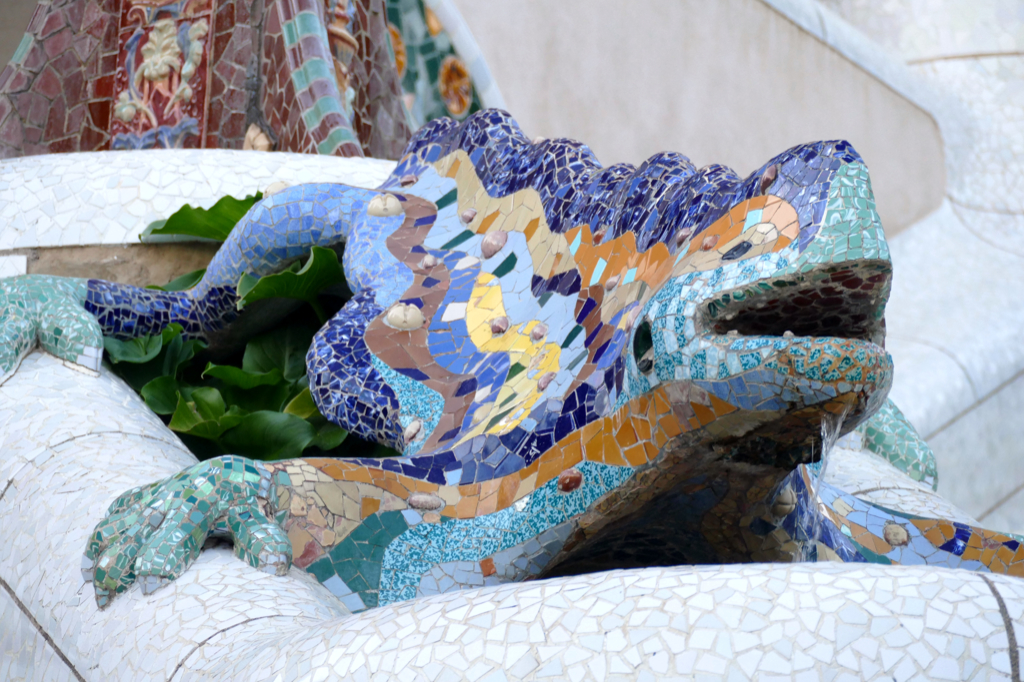
When building the park between 1900 and 1914 on more than 17 hectares, Gaudí didn’t consider only environmental friendliness. He also emphasized cost-efficiency by adapting his plans to the hilly terrain. The organic shapes of the retaining walls and terraces allow them to blend in with the terrain and thus convey the impression of absolute naturalness.
Smart spender Gaudí even got the required materials on the site. For many of his beautiful mosaics, he used waste from the nearby ceramic factories.
You can visit the Parque Güell every day from 9.30 a.m. to 7.30 p.m. The general entrance fee starts at 10 €uros and does not include the entrance to the Casa Museu Gaudí. Especially in summer, you should buy the tickets online* in advance so that you don’t have to wait too long at the cash.
 Afternoon Activities
Afternoon Activities
Fundació Joan Miró
The Fundació Joan Miró is an art museum dedicated to Joan Miró, obviously.
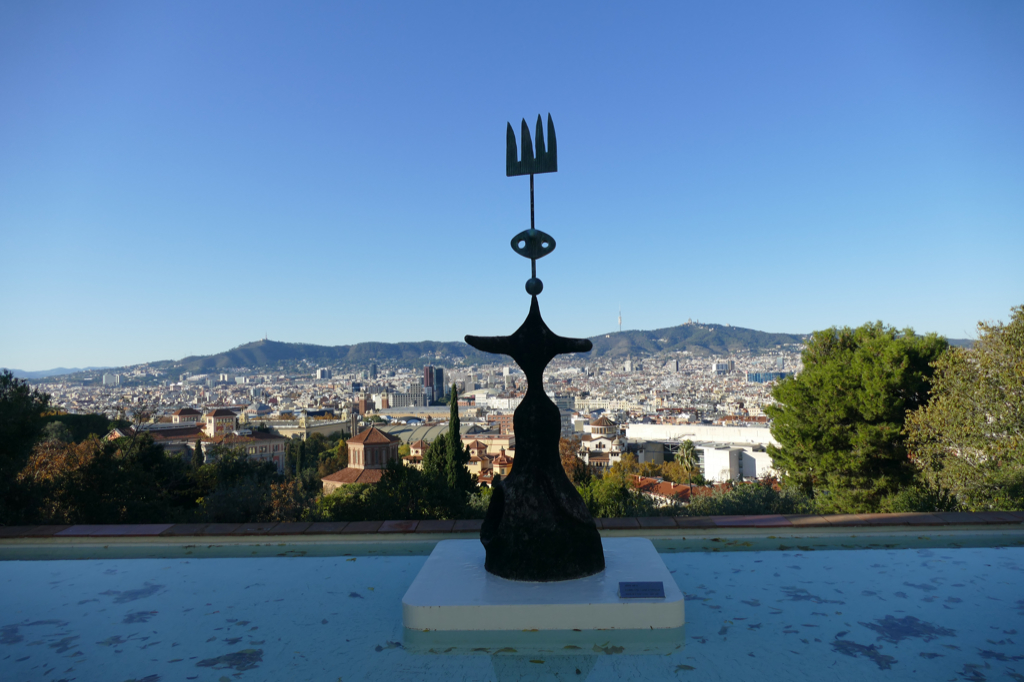
Miró himself initiated the museum. Josep Lluís Sert completed the building in 1975. Not only was he a friend of Miró, but he was also a student of Le Corbusier. The American Institute of Architects awarded the building with the Twenty-five Year Award in 2002.
The building in the shape of a clean white cube is located at the foot of Montjuïc, not far from the Museu Nacional d’Art de Catalunya. It houses over 10,000 of Mirò’s paintings, drawings, sculptures, and tapestries. However, some of his sculptures are standing on the roof terrace where they form an intriguing ensemble with the building and the panoramic views of the city.
Not long ago, I visited another gallery dedicated to Miró’s work. I’m introducing it in my post on Palma de Mallorca.
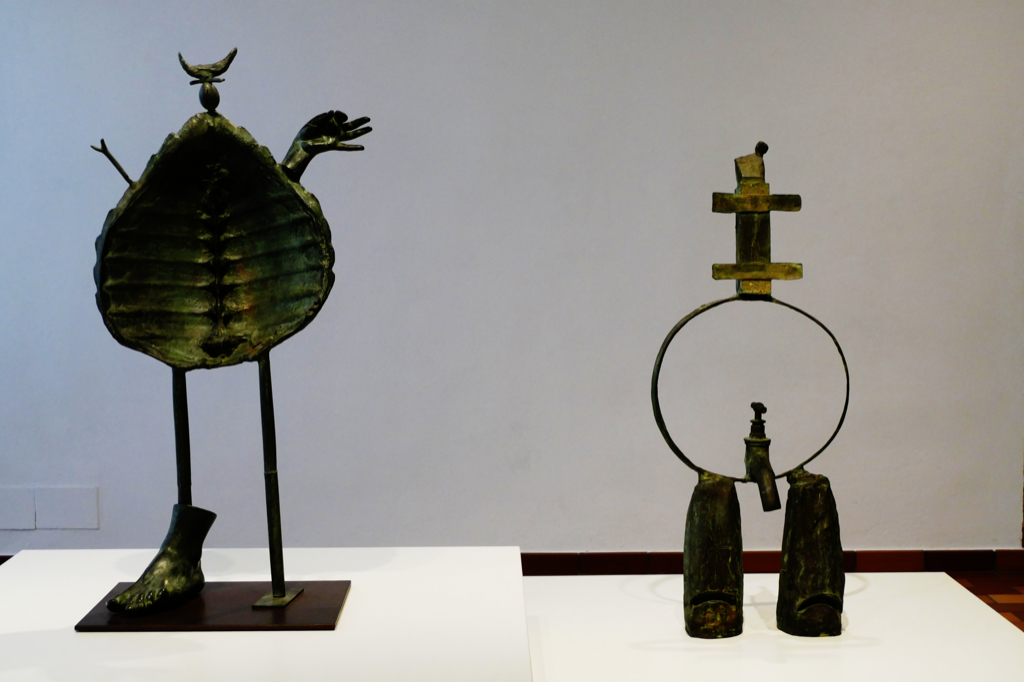
You can visit the museum between Tuesday and Sunday from 10 a.m. to 6 p.m. The general admission is 13 €uros and free with the Barcelona Card*.
Museu Nacional d’Art de Catalunya
In 1990, the collections of the Museu d’Art Modern and the Museu d’Art de Catalunya were merged and are now housed at the Museu Nacional d’Art de Catalunya.
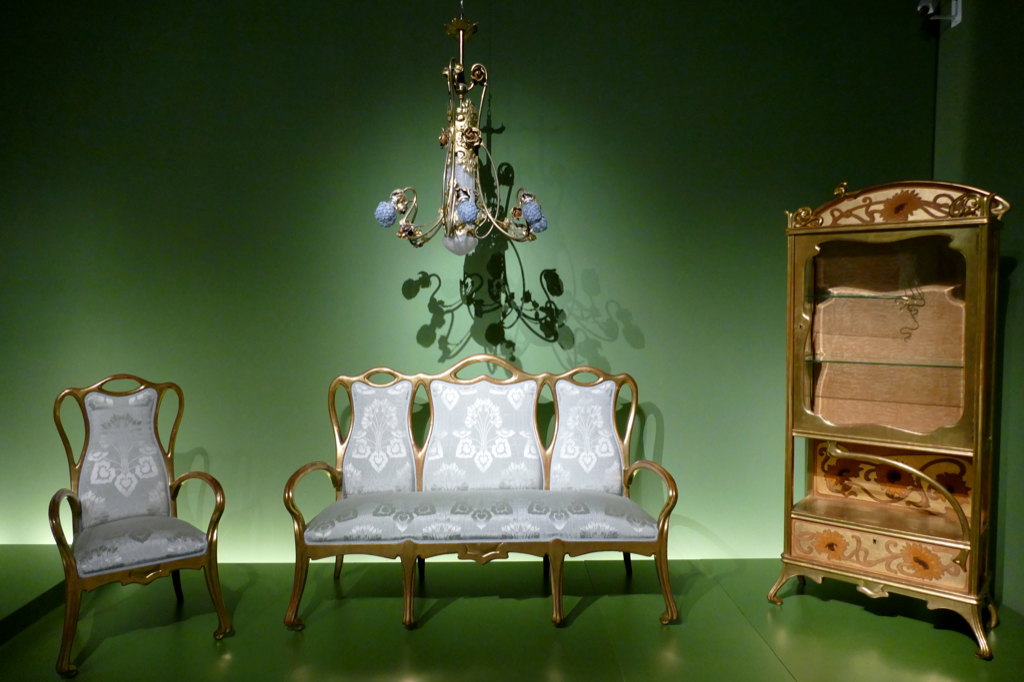
Its Romanesque collection is considered one of the largest in the world. The large-scale Romanesque frescoes from the 12th and 13th centuries were removed from small churches in the Pyrenees. However, the collection also includes numerous panel paintings and wooden sculptures.
The museum presents also outstanding works from the 16th to 18th centuries for instance by El Greco and Velázquez.
In the modern section, you’ll get to see significant works of Catalan art from the 19th and the first decades of the 20th century.
In addition, the museum shows a part of the art collection of the Museo Thyssen-Bornemisza.
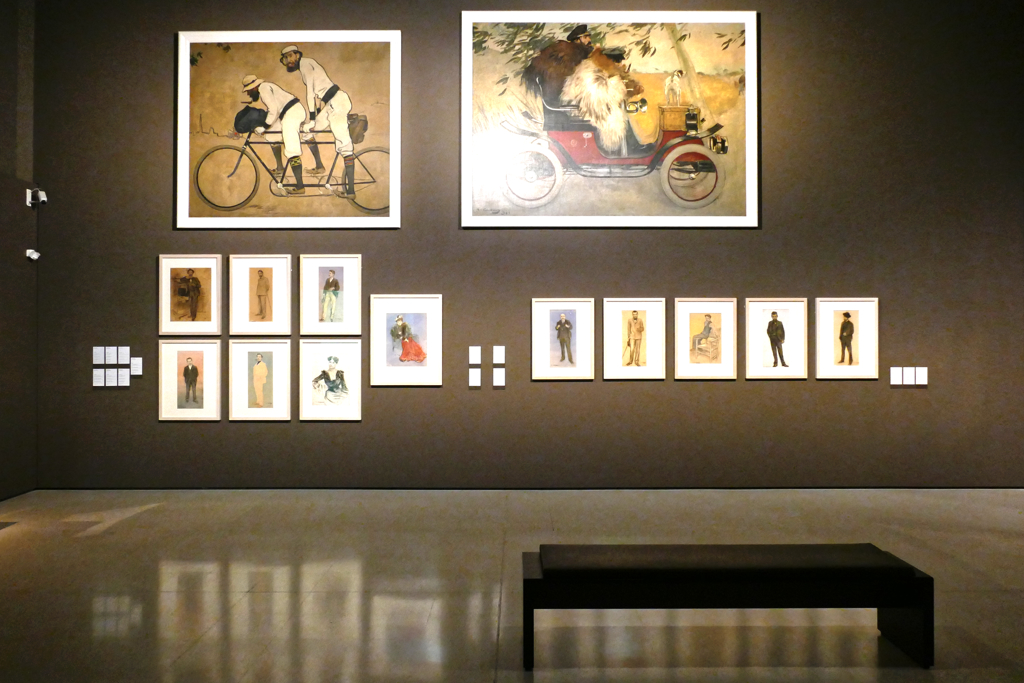
You can visit the museum from October to April between Tuesday and Saturday from 10 a.m. to 6 p.m., Sundays only till 3 p.m. During the high season from May to September, it is open from Tuesday to Saturday between 10 a.m. and 6 p.m., Sundays only till 3 p.m. The general admission is 12 €uros, yet free with the Barcelona Card*.
 Dinner
Dinner
We picked Anita Flow for our dinner in Barcelona mainly because the restaurant is located just a couple of blocks from the Hotel HCC St. Moritz*. After a long day, you probably won’t feel much like venturing around.
Anita Flow is a rather casual place – actually, we first weren’t sure if they were only a bar. And talking ’bout bar: Although they were already open when we arrived, their kitchen opened only at 7 p.m. To learn more about Spain’s dining hours, check out the section on mealtimes in my general guide to Spain.
Once the kitchen got fired up, we were able to choose from many tempting options. Interestingly, they are not only serving Spanish food with a healthy twist and many vegetarian choices, but also dishes rooted in Peruvian, Venezuelan, and other Latin American cuisines. They also serve lovely wines and cavas, hence, sparkling wines, at reasonable prices as well as different craft beers. They are especially popular for their complete brunch that is served on weekends between 11 a.m. and 4 p.m.
Anita Flow is five blocks east of the Casa Batlló on Carrer del Consell de Cent 413. You can find detailed information as well as their menu on their website.
 Nightcap
Nightcap
We were very lucky that the Hotel HCC St. Moritz* invited us to some sparkling Cava.
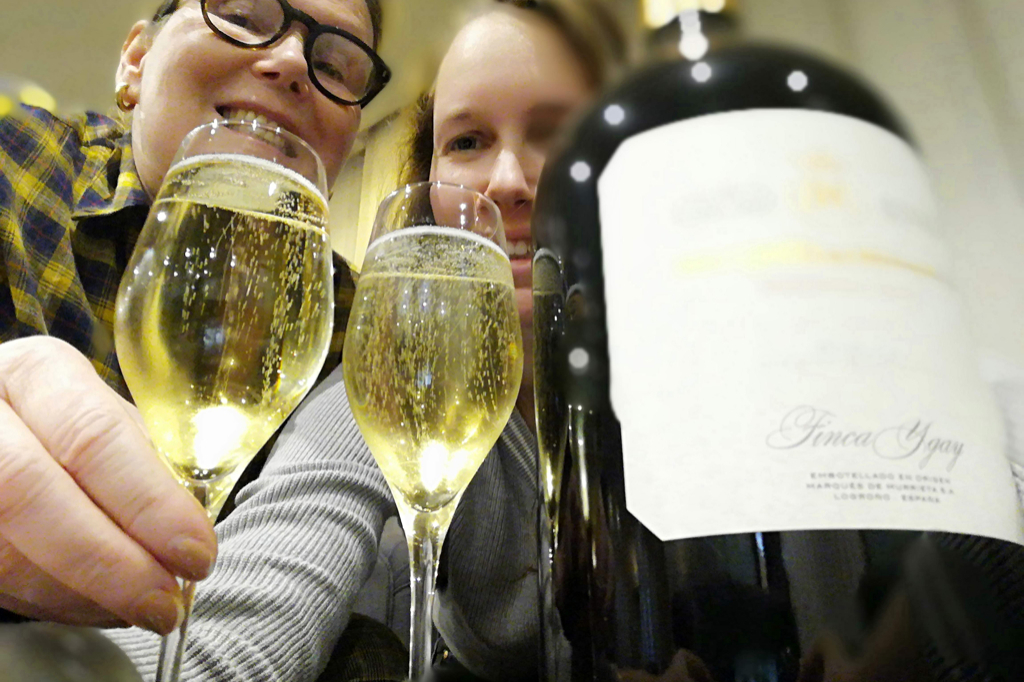
However, if you are looking for a more upscale bar, I’d suggest you enjoy not only a drink, but most importantly, the night view of Barcelona at Azimuth Rooftop Bar.
It is located on Gran Via de les Corts Catalanes 619 and stays open every day from 5 p.m. to 12.30 a.m. Unfortunately, they don’t take reservations.
 Accommodation
Accommodation
Barcelona is one of the most touristy cities in Europe. Consequently, there is a wide choice of accommodation, however, none of them is a bargain.
I was very lucky to get a quite good deal in the best location ever. We stayed at the Hotel HCC St. Moritz* on a quiet side street of the central boulevard Passeig de Gràcia, just minutes from the eponymous station, which is one of the major hubs.
Already due to this fantastic location, I can absolutely recommend the Hotel HCC St. Moritz*. But also the rooms are spacious and have a nice ensuite bathroom with a tub. Hence, we enjoyed a nice soak after a long day of exploring the city a lot!
Nevertheless, on this map, you can choose from various lodging options according to your budget and a location that’s convenient for you*:
Map
This map should help you to easily find all the wonderful places I’m introducing in this post. To switch between the itineraries for a sunny and a rainy day, just open the legend at the left upper corner, and you can hide or unhide the respective layer as you wish. This way, the map will show only the section you really need and be clearer.
If you have more time to spend in Barcelona, check out my comprehensive post.
To get inspiration for visiting other fascinating places, check out my informative post on Spain. There you’ll also find extended information that will make your trip to Spain so much smoother and far more enjoyable.
Pinnable Pictures
If you choose to pin this post for later, please use one of these pictures:
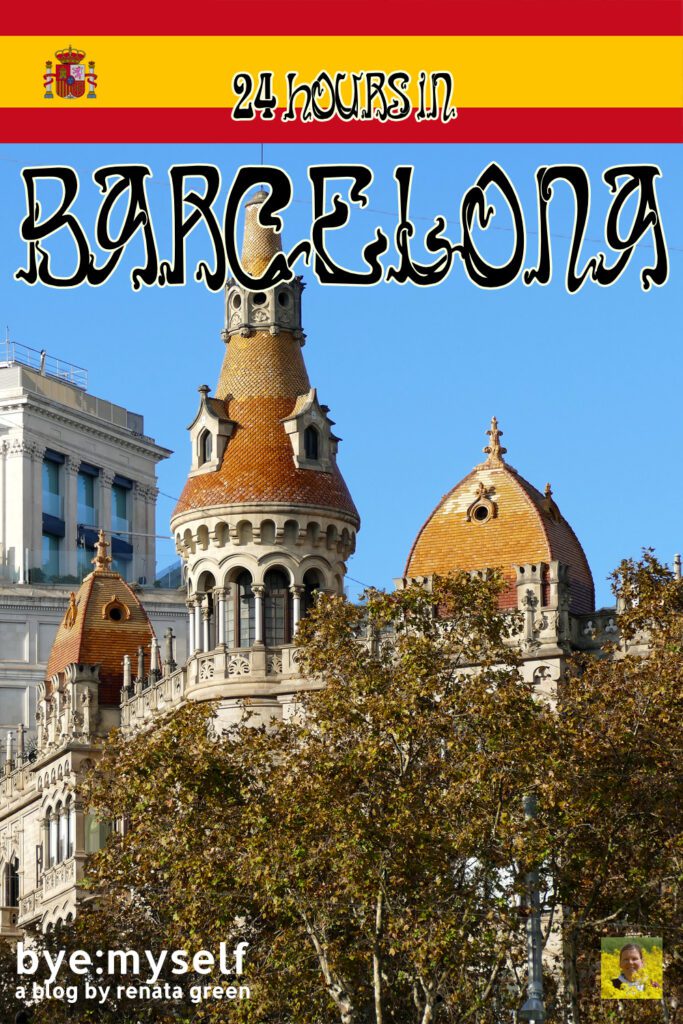
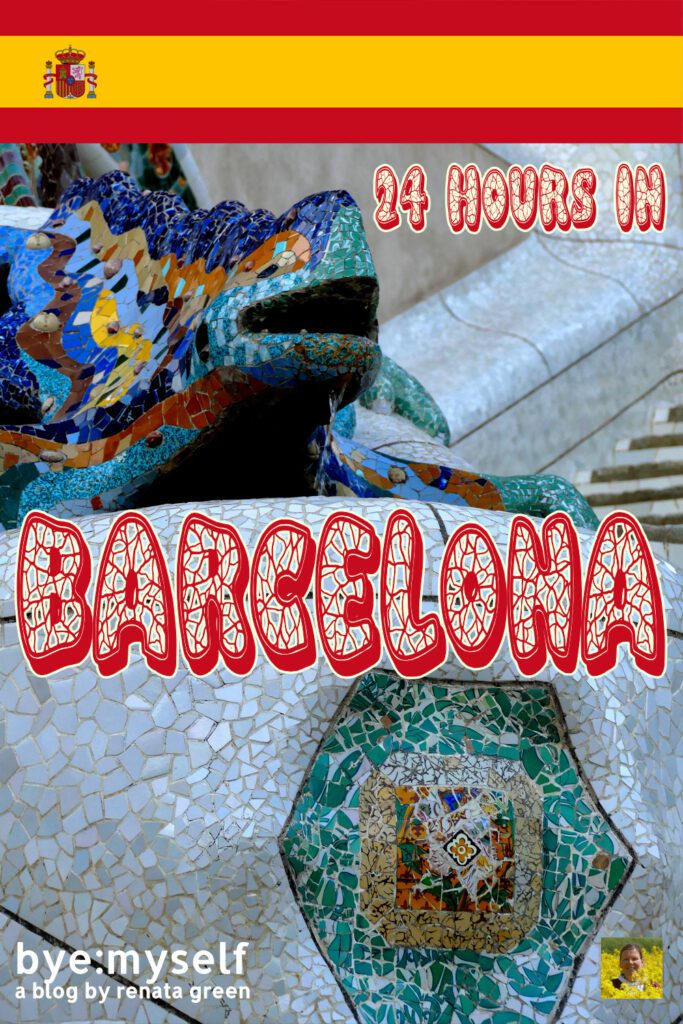
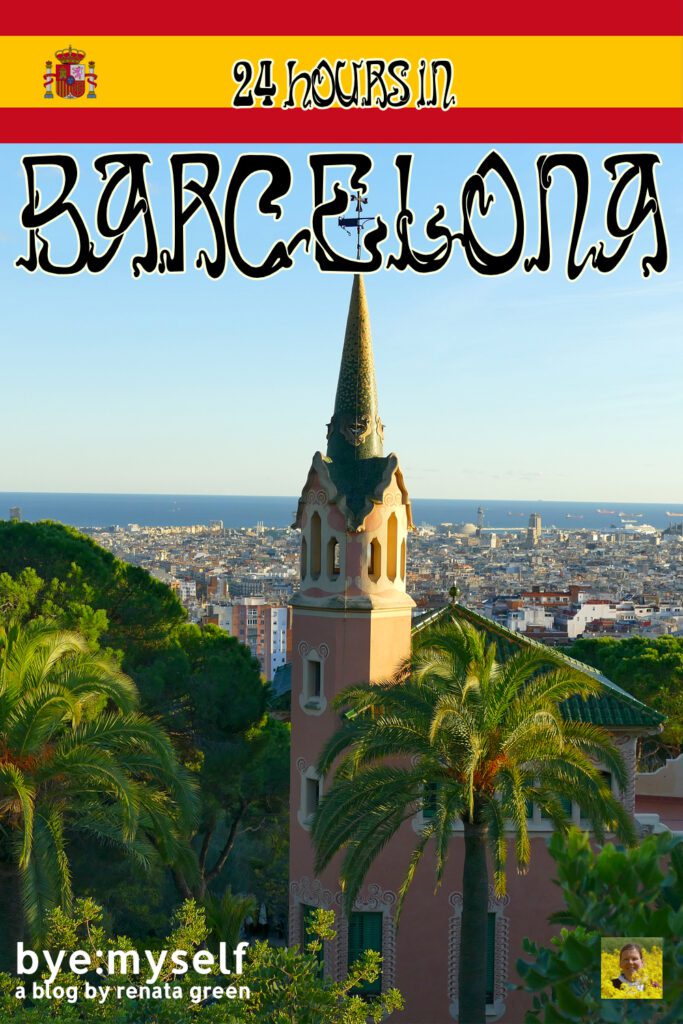
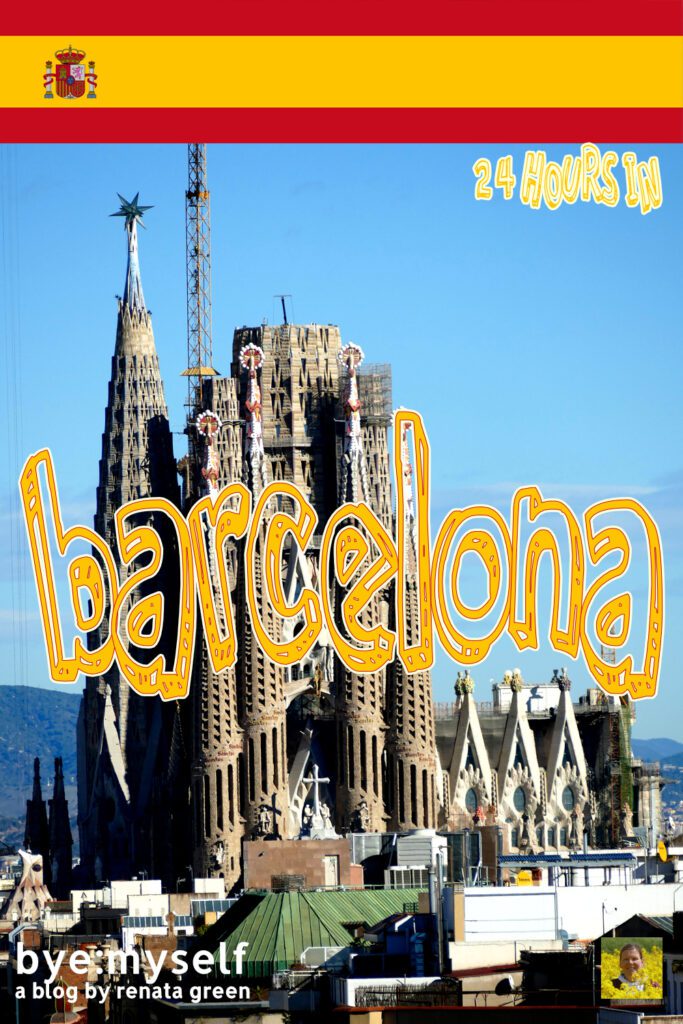
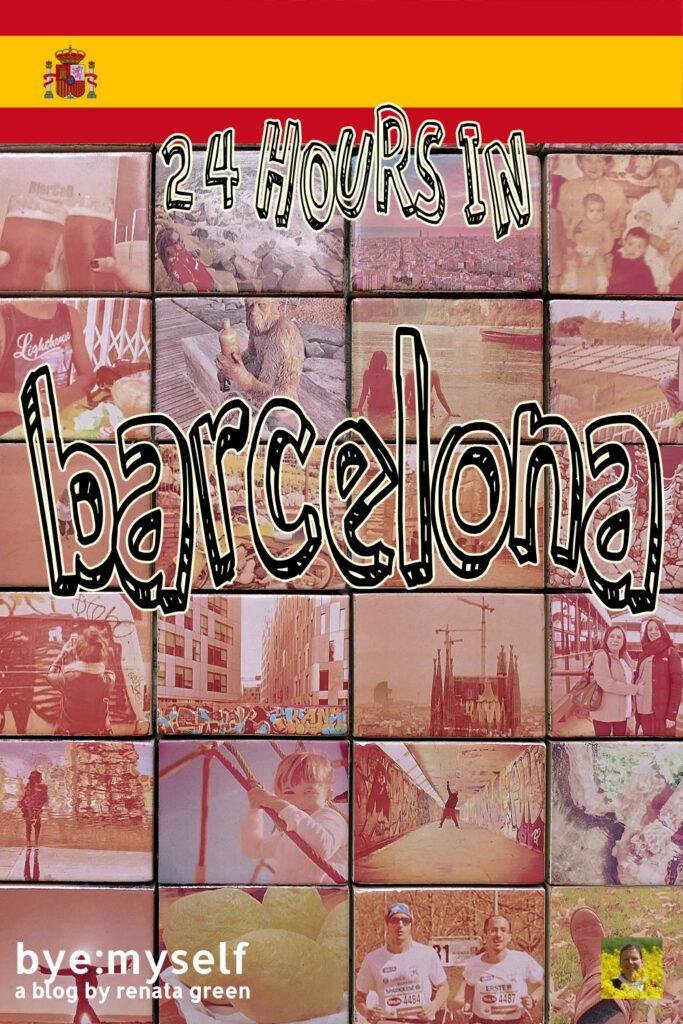
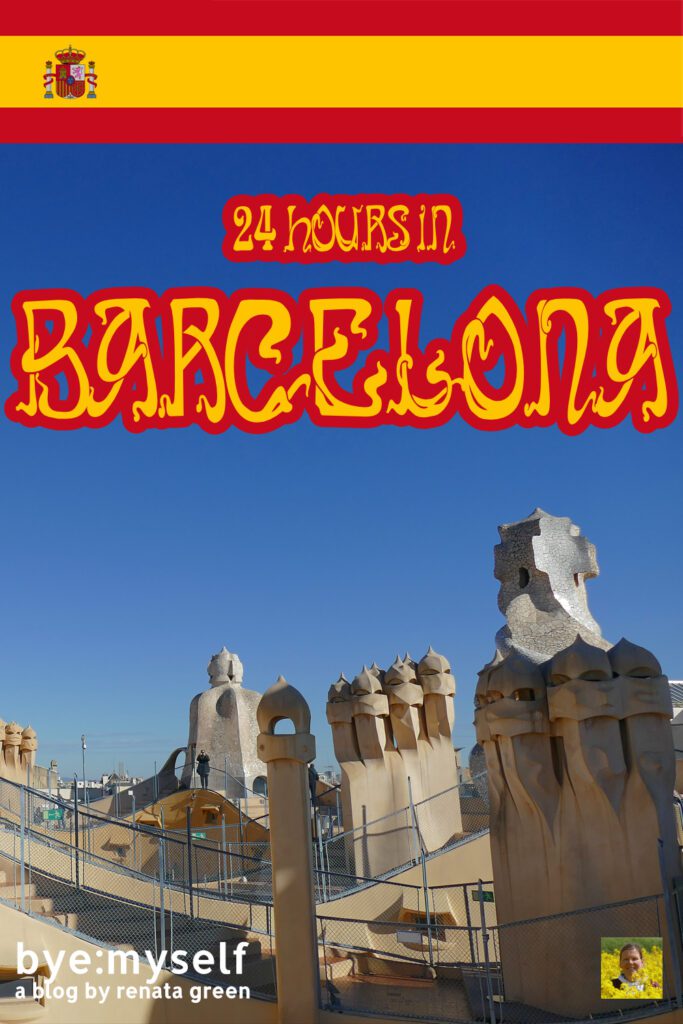
Note: I’m completing, editing, and updating this post regularly – last in July 2025.
Did You Enjoy This Post? Then You Might Also Like These:
Best Street Art in TENERIFE
SPAIN – A Complete Travel Guide
Guide to CORDOBA – the Moorish Center of Andalusia
Guide to CADIZ – the Oldest City in Europe
Best Things to do in FUERTEVENTURA in One Week
EL COTILLO – the Most Beautiful Village of Fuerteventura
CORRALEJO – the Aquatic Paradise of Fuerteventura
PLAYA de COFETE – thirteen kilometers of paradise
Disclaimer: * This article contains affiliate links. By purchasing items through my affiliate links or booking hotel rooms at no extra cost for you, I will receive a small commission that helps to run this site.
Icons: money bag by Roundicons from www.flaticon.com, police car, train, sun, glass, and bed by Freepik from www.flaticon.com, takeoff plane and board made by ultimatearm from www.flaticon.com, info made by Roundicons from www.flaticon.com, umbrella made by Kiranshastry from www.flaticon.com, food plate by Vectors Market from www.flaticon.com


